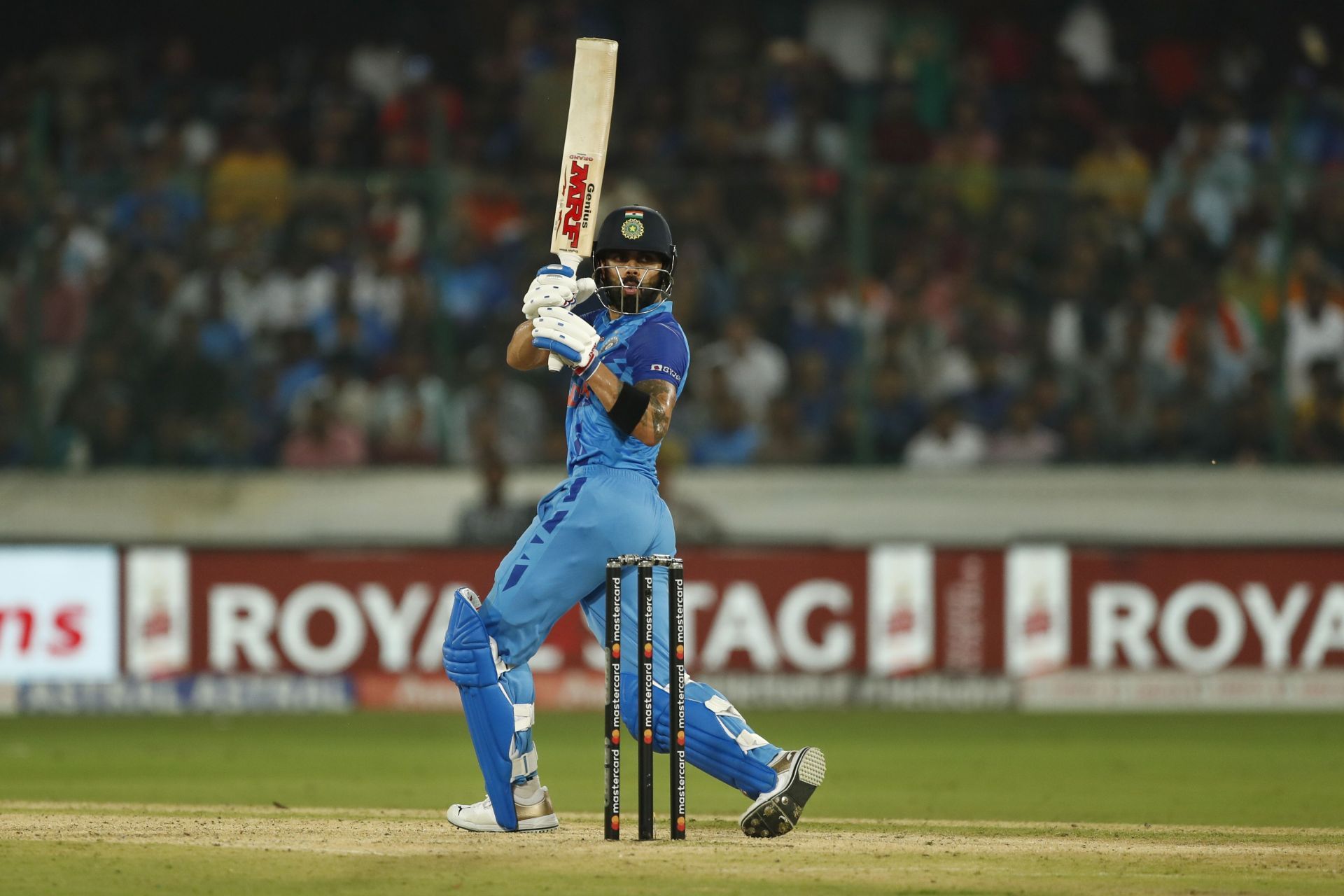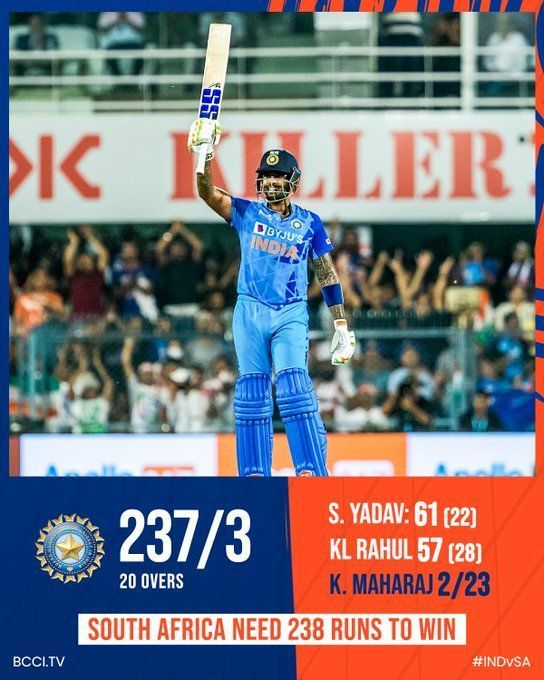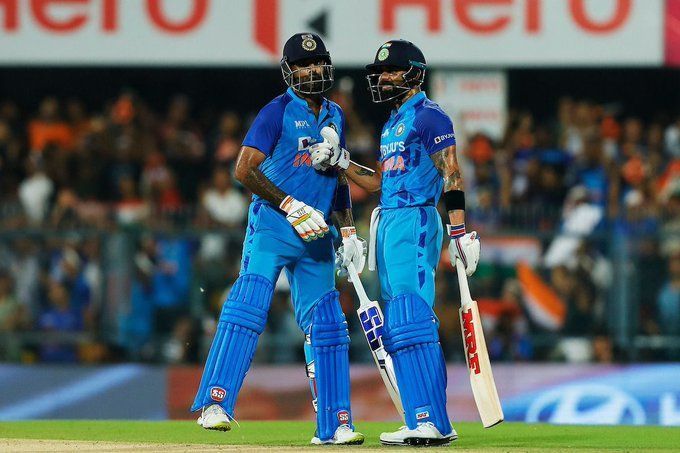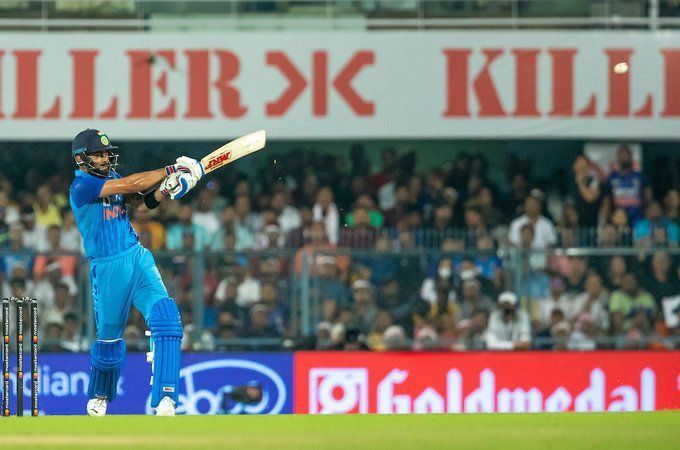
Like it or not, India's batting approach is still based around Virat Kohli
It's been nearly a year since Virat Kohli's India suffered a T20 World Cup debacle in 2021.
In a tournament where winning the toss and fielding first was the mantra, the Men in Blue constantly found themselves in situations where setting a total was a burdensome task.
Rohit Sharma was appointed as India's all-format captain soon after the tournament. He has since shouldered the task of remodeling the team's approach in the shortest format. A year later, he will lead his side into a T20 World Cup, which will be played in contrasting conditions to the one they faced in the UAE.
India's personnel in the top four have remained the same from the previous tournament. So, has anything really changed in the past year? Yes, it has.
India's approach towards the shortest format of the game has taken on a fresh outlook since Rohit's ascendance to the captaincy. A much-needed reboot of the culture has taken place and the team still has some way to go in that regard.
The upcoming T20 World Cup in Australia will provide the biggest test for the Men in Blue's new-fangled approach.
India's new approach to T20Is is finally starting to come together
India clinched their three-match series against South Africa in their final bilateral series before the T20 World Cup on Sunday, October 2. They secured the series with a game to spare, piling on 237 runs in the second T20I to win the contest by 16 runs.
After the match, Rohit was asked about the approach his side have adopted in recent times, to which he replied:
"All of us came together and said this is what we want. It has given mixed results but we will continue that approach. In the recent past, the focus has been on each individual to come in and do the job, and we've moved forward from there."
The approach he is talking about speaks a lot about the progression of the T20 format and where the game is headed. It is an aggressive, crash, bang and wallop setup where the batting teams have opted to go all guns blazing throughout their innings.
So, what is the job of each individual in this setup? How is Kohli central to it? We'll get to that. But first, let's take a look at how the Indian openers have helped set up the team's approach.
Rohit has been walking the talk and leading from the front in setting the template for the rest of the team. He has done so quite selflessly too.
Rohit's strike rate in the first six overs in all T20s was at a respectable 127.12 with an average of a shade over 25 in 2020. In 2021, it jumped to 139.28 with an average of 58.11, and it is at 136.68 so far this year with an average of 28.65.
The last two years, in particular, have caught the eye. Even before becoming Indian captain, the batter understood his role as an opener in T20s with his Indian Premier League (IPL) franchise, the Mumbai Indians (MI). He slowly developed himself into an effective impact player, rather than one who plays the long knock, which was previously one of his strongest suits.
India's top order is packed with players of that ilk and the captain took the initiative to set the tone for the new approach. So much so that he is yet to bat in the death overs in a T20 contest in 2022.
Alongside him, there has been pressure on KL Rahul to adapt and match up with the same approach. There's little doubt that the 30-year-old has all the talent and ability to perform at the same level as his captain and he's shown he can do the same in the recent past.
His performance against Afghanistan in India's final group stage of last year's tournament proved that. This was also the case with his 57-run knock off 28 balls against South Africa in the second T20I in Guwahati, which set the platform for the rest of the Indian batting unit.
If the two openers are able to successfully adopt this approach, it will bode well for the side, as evidenced by some of their victories over the last year.
Virat Kohli at No. 3 holds the innings together
The approach India are trying to adopt may not always pay off for the side. This is not a reflection on the team's ability to play that way, but of the fickle nature of T20 cricket.
Hence, Kohli could be the insurance the team needs at No. 3. The right-hander, when on song, has now become a player who the rest of the batters can build around. Since his return to form, Kohli has been happy to play second fiddle to allow the batters at the other end to explode.
Most top teams have a player of this ilk in their starting XI. Australia have Steve Smith, while England have Dawid Malan. Kane Williamson plays a similar role for New Zealand.
Stating that there is no place for anchors in the current iteration of the shortest format of the game is an argument many have advanced. But teams evidently like to have some insurance in the middle, especially in knockout tournaments, to bail them out in case the ultra-aggressive approach doesn't pan out.
India have Kohli in their ranks to be an anchor who is also more than capable of shouldering the attacking burden.
The key to executing this role is to play according to the demands of the situation, while making sure that batters' strike rate only gets progressively better throughout the innings. Kohli is a master of this craft.
While India's No. 3 has taken a bit more time than usual to kick into gear, there aren't many better than him at progressing an innings. His strike rate in the first six overs this year is 119.18, which takes a small climb to 122.22 in the middle overs.
At the death though, it zooms across to nearly 182, with Kohli ensuring he makes up for his comparatively slow start.
One of the main reasons for those starts has been teams introducing spin against him in favorable conditions. That, though, won't usually be the case with the conditions in Australia. This could mean Kohli will face more pacers and he might be able to accelerate better than he has done at venues across Asia.
The former Indian captain might not always be able to keep up with the desired strike rate every time as his innings progresses. Building an innings like this is a skill that may not always come off in the heat of battle. But the Royal Challengers Bangalore (RCB) star finally seems to have found his mojo again.
In the last 10 T20Is, Kohli has scored 404 runs, including three half-centuries and a century. The most pleasing aspect, though, is that he is striking at a rate of 141.75, a figure which India will hope only gets better over the next month or so.
Their X-factor, Suryakumar Yadav, comes into the picture if things go awry. The Mumbai batter has struck at a rate of 143.10 in the powerplay, progressing it to around 164 in the middle overs. In the final four overs, he boasts a stupendous strike rate of roughly 240.
Given his numbers, it comes as no surprise that fans and analysts believe he is already one of the best T20 batters going around at the moment.
In essence, when batting with Kohli, Suryakumar basically allows the former Indian captain the luxury of playing himself in. The latter is leaps and bounds above any batter in the world at the moment with respect to the range of areas he can score runs in. His impactful knocks have helped Kohli play himself in as runs have come at a frightening pace at the other end.
The pair consequently seem to relish batting alongside each other. In Guwahati, they stitched together a 102-run stand in just 42 balls. While Suryakumar racked up 61 off just 22 balls, Kohli scored an unbeaten 49 from 28.
They also worked well together in the 2022 Asia Cup, though the Men in Blue ultimately fell short in the Super 4 stage.
In the last couple of series, this is what India's successful template has looked like. Every player is doing their job, not only for themselves but for the team as well, which Rohit has emphasized time and again.
The idea of basing an approach around Kohli, who hasn't had a great couple of years, might have its critics. However, one has to remember that this is a player who has scored 3130 runs across all formats in Australia at an average of over 50.
Building around Kohli while supporting him with firepower from the other end might be India's best chance of lifting the T20 World Cup for the first time since 2007.





